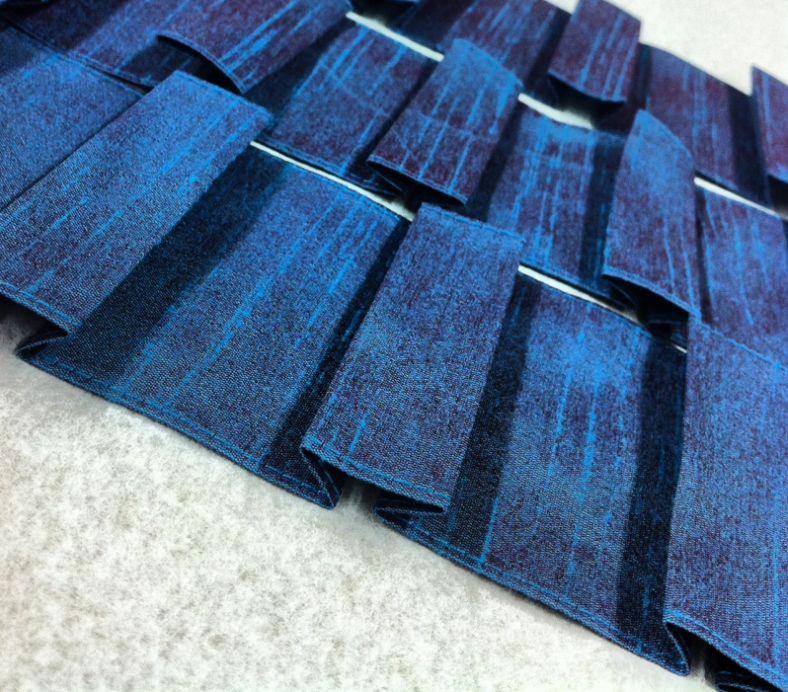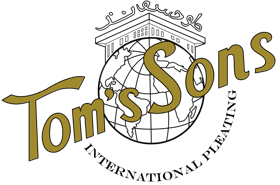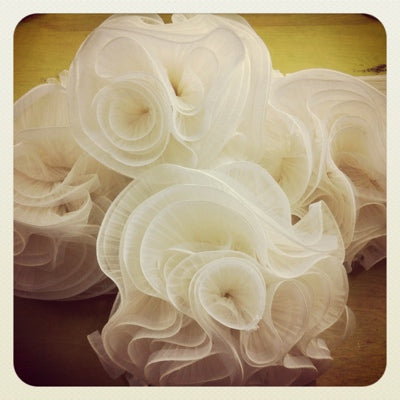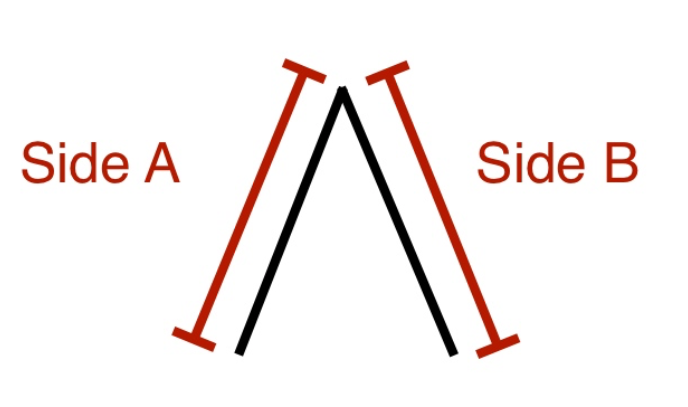
Best Panel Shapes for Pleating
This is the second post in a series on fundamental pleating concepts. I would recommend reading The ABC’s of Pleating prior to reading this post.
This one discusses the two basic panel shapes you need to understand if you are a designer or a pattern maker. By panel, I mean a distinct shape of fabric. For the purposes of pleating, panels can be either semi-circles or squares/rectangles. (For you geeks out there that like technical definitions, the second shape is a quadrilateral with right angles.)
Semi-circle:
The important thing here is that the fabric needs to be cut into a semi-circle if you will be sunburst pleating. This type of pleating emanates out from one point – like the rays of the sun – hence the term sunburst or sunray pleating. Notice how the size of the pleat gets smaller as it approaches the center of the circle. This can only be accomplished with this shape, and it must be cut into this shape before pleating. See some examples of sunburst below:
Square & Rectangular Panels:
Square and rectangular panels are a bit more straight forward than the circular shaped panel. The size of the pleat is the same along the distance of the pleat. Therefore, the size at the top of the dress and the size at the bottom of the dress (or whatever you are sewing) will be the same. The second thing to note is that you are pleating along one grain line only, as opposed to sunburst pleating which is pleated across all three grain lines: straight grain, cross grain and bias grain. (Explained in The Anatomy of Bias Circle Skirts.)
Below you will see an illustration of a square panel and a pleated leather skin. Notice how the size of the pleat does not change throughout the pleat.
In order for you to have a better understanding of trims and ruffles, I am making a distinction between square and rectangle pleats. Whether you need to add a pleated trim to your dress or make a pleated bed skirt around your bed, the principle is the same. You need a long rectangular shape. Sometimes that rectangle can be 50 inches in length and sometimes that it can be as long as 50 yards.
Below are some examples of our custom pleated trims. The blue fabric was an iridescent silk, pleated in a box pleat that was to be appliquéd to garments. The grey fabric was a polyester taffeta made from Trevira fiber (our favorite). We made a side pleated ruffle with the Trevira fabric for a custom pleated drapery project.
When making ruffles or trims, the fabric is sometimes cut into strips before it is pleated and sometimes after it is pleated. Determining which method to use depends on many variables, like the fabric quality, the pleat style, the width of the goods, the type of hem, etc. I will tackle these issues after I have given you more information on the basic theory of pleating.
Stay tuned…MUCH more to come!









